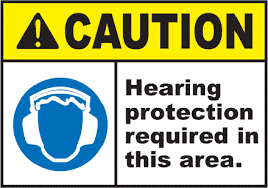What is a Hearing Conservation Program?
An effective occupational HCP preserves and protects the hearing of employees who work in manufacturing, farms, mines, military bases and other noisy workplaces. An HCP also gives employees the knowledge they need to protect themselves from nonoccupational noise exposure.
According to OSHA, an occupational HCP consists of these elements:
- Noise measurement
- Noise control
- Audiometric testing
- Hearing protection
- Employee education and training
- Recordkeeping
While OSHA provides the minimum standards for hearing conservation, the National Institute of Occupational Safety and Health provides a practical guide outlining the 8 components of an HCP that are considered to be best practices:
- Noise exposure monitoring
- Engineering and administrative controls
- Audiometric evaluation
- Use of hearing protection devices
- Education and motivation
- Recordkeeping
- Program evaluation
- The HCP audit
All components are covered in CAOHC-approved courses.
What are the Benefits of an Effective Hearing Conservation Program?
The primary benefit to workers is the prevention of noise-induced hearing loss (NIHL). However, HCPs can also detect hearing losses that may be due to causes other than workplace noise and might otherwise go untreated.
Temporary hearing loss and tinnitus can also be reduced or eliminated, as well as some noise-related safety hazards. Employees are less likely to feel fatigued and annoyed, and the possibility of stress-related illness can also be reduced.
Management’s benefits derive from better labor-management relations, improved employee morale and the decreased likelihood of antisocial behavior resulting from annoyance and stress. Less noise and better hearing can lead to greater job satisfaction, productivity and safety.
Studies have shown that HCPs can reduce accident rates, illnesses and lost time. The prevention of NIHL reduced the risk of workers compensation payments and may help contain costs associated with workers compensation insurance.
Reducing noise through engineering controls can have a positive effect—not only by preventing hearing loss but by reducing absenteeism and increasing productivity. Read More
